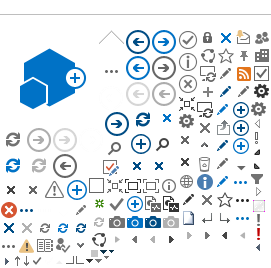The main optics of the compressor are the two gratings and a plane mirror.
The smaller grating is 320 mm by 205 mm, and the larger is 265 mm by 420 mm. Both are holographically generated with 1480 grooves per millimetre, and coated with gold. The plane mirror is coated with protected silver for increased reflectivity and damage resistance.
The dispersion plane of the compressor is vertical, so the grooves lie in the horizontal direction, with the gratings tilted 36 degrees from the vertical. The first grating is held with its face tilted downwards, while the heavier second grating faces upwards allowing it to be supported from behind. The mounts were designed to carry the load of the gratings while still permitting very fine adjustments to their rotations and position. Both mounts allow rotation of the gratings around horizontal and vertical axes (which intersect in the centre of the grating face), rotation of the grating in its own plane, and horizontal motion along the axis of the compressor.
High-precision bearing slides were used for all these motions, which are driven by stepper motors controlled by a driver program running on a PC in the laser area. The gratings are held in metal cassettes, which relocate into bayonet-type supports on the grating mounts. This allows the gratings to be covered while being installed and greatly increases the ease of handling, an important consideration given that the second grating in its holder weighs nearly 20 kg.
The bandwidth of Gemini is around 35 nm, which fills (in fact, overfills) the height of the second grating after dispersion by the first grating. This is the reason why the compressor is operated in double pass, so the spatial dispersion of the beam in the first pass is reversed in the second. The return path is slightly offset from the input by a tilt of the back mirror about the vertical, so the compressed pulse is spatially separated from the input by a little more than a beam diameter.
The compressed pulse is steered to the final mirror, which sends the beam downwards into a vacuum pipe connected to the interaction chamber. The pointing of this mirror is controlled from the target area. At the top of the pipe is a gate valve to allow vacuum isolation of the compressor when the interaction chamber is at atmospheric pressure. The gate valve has a window so that low-power beams can be sent to the target area even when the gate valve is closed. There is a shutter inside the compressor chamber, which is closed when the beam is not required in the target area, and which carries a disc of absorbing glass to dump the energy when the beam is being used in the laser area.
To preserve the grating reflectivity, a radio-frequency cleaning system has been installed in each chamber, similar to the one in target area 2. An RF discharge in a low-pressure mixture of oxygen and argon creates oxygen ions, which attack carbon deposits on the grating surface and remove them as CO2 without damaging the grating rulings.
